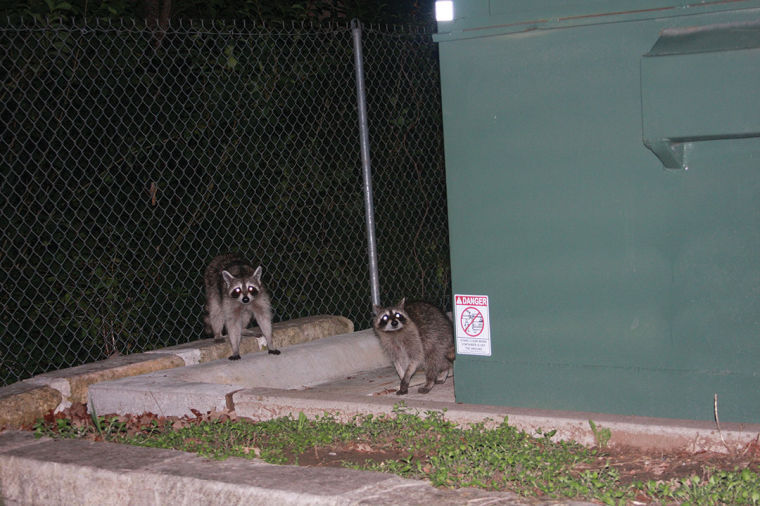Cockroaches, raccoons, ant infestations in apartments–oh my!
No matter where you live, pests will find their way into your home if they are provided food and water by their host. Even the cleanest homes can fall victim to these pests, as many St. Edward’s University residents are learning.
“We receive one or two service requests a week for insect pests. Much of the recent increase in insect activity is associated with the severe drought we are experiencing in Central Texas,” Brian Burns, assistant director of the Facilities Department, said.
Burns said that raccoons and other rodents are a constant presence but bugs can be eradicated.
“By following an integrated pest management plan we can minimize our reliance on pesticides and reduce the pest populations that enter a residence or building.”
The Facilities Department stated that the drought conditions force insects inside to search for food and water.
Junior Riana Soobadoo and Senior Kate Orkild are roommates in an on-campus apartment. Despite keeping their space clean, they have still had bug infestations.
“I don’t know where the cockroaches were coming from, to be honest. The cracks between the wall and the tiles,” Soobadoo said describing the situation in her roommate’s bathroom.
Although they try to keep clean, Soobadoo and Orkild have still had multiple run-ins with insects. Soobadoo said the ants have became her other roommate.
“It was like an ants nest. They were behind [Orkild’s] bed. She had a shirt that had fallen behind her bed and she pulled it out, the shirt was covered with ants.”
Orkild said maintenance responded immediately to her request.
“When I called them it was around seven o’clock at night. We left, and my roommate said they came at nine the next morning,” Orkild said. “They came down, sprayed and I haven’t seen an ant since.”
Rapid response to a report is part of maintenance’s integrated pest management plan. Still, they can not kill bugs they do not know about.
The first step towards fighting the insects is to fill out a maintenance request. The sooner maintenance is called, the less likely things will get serious. They strive to be on the scene within a few hours to kill the pests and prevent an invasion.
The plan also calls for Orkin and Bugmaster contractors to do monthly services on many campus buildings, including the apartments.
These serious, trained professionals are only required in serious cases. Although they would perform an inspection within one business day, if needed.
Diligent maintenance and outside help has led to a decrease in insects and other pests this year, according to Burns.
After maintenance sprayed for bugs, Soobadoo and Orkild said there was little or no scent of the insecticide.
This is because maintenance uses only “low-toxicity green label” products. The more damaging red and yellow label varieties are only necessary in case of termites.
Killing bugs is always more admissible than killing an animal pest, such as a raccoon. St. Edwards environmental surroundings mix urban and woods, making a perfect habitat for wild scavengers such as raccoons, possums and rabbits, according to the Facilities Department. The dumpster close to apartment building 13 and the woods between I-35 and campus is home to the most raccoons.
“For the most part, we co-habitate successfully. We do ask that members of the university community not feed the wildlife as this may encourage more aggressive behavior,” Burns said.
Squirrels, possums, gray foxes, wild rabbits and raccoons live off our leavings.
All anyone can do is not tempt them by leaving trash or food outside, as Soobadoo learned one morning.
“We left our trash out one night, just because it was raining a lot and we thought we’d take it out in the morning. But come the morning the stuff was everywhere. All our trash was in front of our door.”
Whenever these animals do enter a building, which is rare, they are safely caught in a humane manner and are released back into the wild, Burns said.
“We do ask that members of the university community not feed the wildlife as this may encourage more aggressive behavior,” Burns said.







